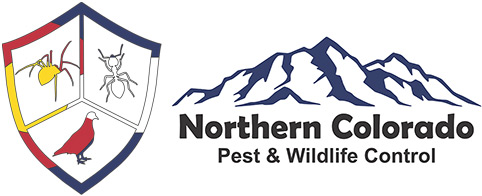SCHEDULE YOUR APPOINTMENT NOW
Our wildlife control services have been designed with the well-being of the animals in mind. We share the environment with these animals and believe that they are a valuable part of the ecosystem and our lives. We are active participants in conservation in the area and we practice what we preach. Our goal as wildlife managers is to help and educate our customers with human and wildlife conflict. As the front range of Colorado continues to grow, these human and wildlife conflicts are becoming more common. We do everything possible to relocate wildlife or use one-way doors to minimize the stress on the animals that we are working with. Due to state and federal laws, some animals may be forced to be euthanized or if the animal is sick or injured. There are many options when it comes to wildlife management such as; repellents, exclusion, behavioral changes, habitat manipulation and trapping. We strongly believe that prevention is the best solution and we always take the time to educate our customers on ways to minimize human and wildlife conflict. Sometimes the best solution is to do nothing, and to let nature take care of the problem.
Brown Bat
They migrate in and out of Colorado, arriving in the beginning of May and leaving around September. Management strategies include removal of colony with one-way doors (not an option for nursery colonies), or waiting until the bats migrate and then sealing up the holes so they are not found next year.
Fox Squirrel
Very common rodent found throughout Colorado. Sometimes these guys find their way inside attic spaces where they nest to have babies. In rare situations they have been known to chew electrical lines in the attic, costing lots of money with repairs, or even worse fires. Management strategies include trapping, one-way doors, and exclusion. Trapped squirrels will be relocated.
Northern Flickers
A common pest bird that is known to peck holes in wood or stucco in the spring (March-May). The Northern Flicker males also drum in the spring to attract a mate, which is when the male bird pecks on metal surfaces which creates a noise similar to a machine gun going off. Management strategies include repellants and trapping. Note trapping requires a permit from USFWS which we can assist with.
Pigeons, European Starlings and House Sparrows Pigeon
These three birds are invasive, non-native birds that are not protected under the Migratory Bird Treaty Act. These three birds account for a majority of the pest bird problems in Colorado. Management strategies include, trapping, repellents, netting, and baiting.
Prairie Dogs Prairie Dog
A common range land rodent that is being encroached on by human development. In efforts to manage these rodents we can use baits, fumigants or traps. With fumigation, we have to provide a Fumigation Management Plan and with baiting we also need to check the Endangered Species Bulletin to make sure there are no restrictions, for the protection of other non-target species like the black-footed ferret or burrowing owl.
Rabbits
A very common animal that alone is harmless but with a bunch of their friends can strip bark off shrubs and trees and even decimate the turf grass you worked so hard on. Rabbit management strategies include trapping, exclusion and repellents.
Raccoons
Although rarely seen due to their nocturnal behavior they are extremely common in residential and agricultural areas. Raccoons become common pests when they break into attic areas or into chimneys to evade the cold weather or to have babies. Management strategies include trapping and exclusion. All raccoons trapped will be relocated.
Skunks
Are known for their fowl smell and commonly raid chicken coops, or burrow under sidewalks, driveways, sheds or crawlspaces. Management strategies include trapping, one-way doors and exclusion. Due to state law, this is one species we are forced to euthanize upon capture. In attempt to not harm the animal we offer one-way doors which remove the skunks from the area without harming them.
Garter Snakes
Colorado is home to a wide variety of snakes, most of which are not poisonous. In the area we service the only venomous snake is the prairie rattlesnake. Management strategies for snakes in Colorado include trapping, physical removal, exclusion and repellents.
Voles
A common rodent pest that is rarely seen, but the damage is clearly evident. If you have ever had the snow melt to see a matrix of rodent tunnels underneath, or had juniper bushes, roses or shrubs die for unknown reasons, it might be voles. Management strategies include baiting and in rare situations trapping.
Pocket Gophers
Another common rodent pest that builds underground tunnels. The pocket gopher rarely comes above ground but they push large amounts of dirt above ground. You will know you have them when you wake up in the morning to find large piles of fresh soil piled up in your backyard. Management strategies include baiting, trapping and fumigating.
SCHEDULE YOUR WILDLIFE CONTROL APPOINTMENT NOW
